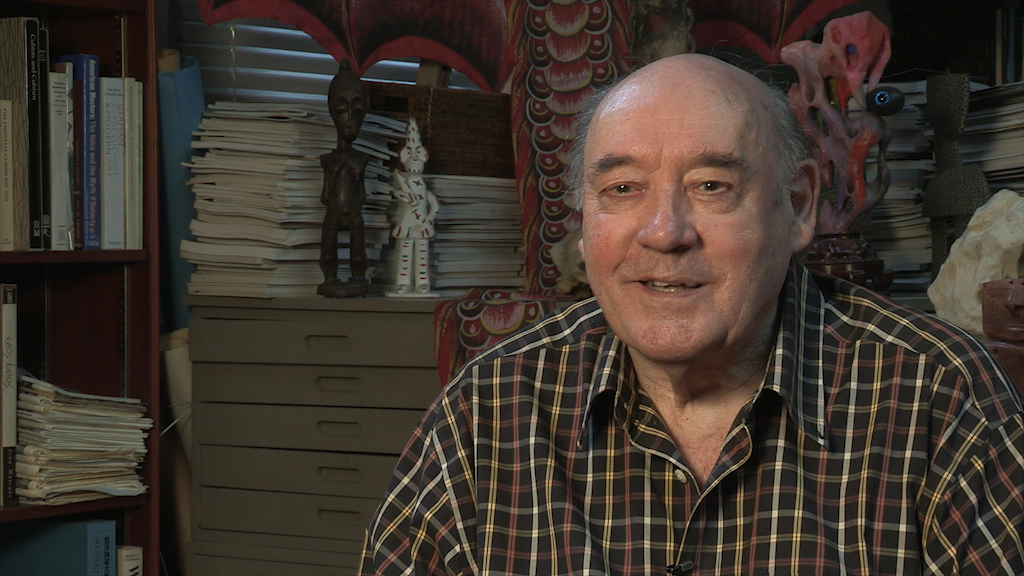NEXT STORY

A lucky accident turns me into a TV presenter
RELATED STORIES

NEXT STORY

A lucky accident turns me into a TV presenter
RELATED STORIES


|
Views | Duration | |
|---|---|---|---|
| 11. My debt of gratitude to Dylan Thomas | 112 | 04:07 | |
| 12. Choosing to become a research zoologist | 118 | 04:42 | |
| 13. Learning how to study animal behaviour | 155 | 04:58 | |
| 14. Developing the concept of typical intensity in animal signals | 105 | 02:31 | |
| 15. A lucky accident turns me into a TV presenter | 97 | 05:00 | |
| 16. Flying by the seat of my pants on live TV | 83 | 04:48 | |
| 17. Congo the artistic chimpanzee | 317 | 04:13 | |
| 18. Life in the Animal World – an exciting and... | 85 | 06:17 | |
| 19. Genesis of The Naked Ape | 117 | 03:39 | |
| 20. Being taken for a spy in 1960s Moscow | 110 | 04:54 |


I developed a concept called 'typical intensity'. You know when a telephone rings, it goes brrp-brrp, brrp-brrp, brrp-brrp, like that. Now, it could be a casual call, it could be an urgent call – the telephone can't tell the difference. The brrp-brrp goes on at a fixed intensity. The only way that you can make it feel more urgent is to let it ring longer, but that's not very... So telephone's not very good at telling you how intense a particular call is or how urgent a particular call is because it has a fixed signal. Now animal signals aren't fixed like that. They're variable, and the stronger the intensity, the stronger the movement. But if that happens... if that goes too far, then there's nothing strange about the ritual. And for the ritual to become strange, it has to develop a typical intensity, that is, that the bird may bob its head slightly faster, but it won't be as fast as it might be if it was just an action like, say, pecking: if there... if there's a hard nut, the harder the nut, the harder the peck.
It isn't like that with animal display. What happens is that the animal develops a typical intensity so the head will be bobbing like this at a particular intensity. It won't be absolutely fixed because it might get a little more excited. But it won't... let me give you an example. Human clapping – you see, because I, of course, later was going to apply all this to humans – human clapping – if you clap like this, it's a very different signal to if you clap like this. And when people applaud, if you measure the speed of clapping, you'll find that there is a typical intensity, that when people are applauding, they tend to clap at this sort of speed. If they're really excited, they might try and clap even faster, but it's very difficult. So they have a...normal applause goes at a certain speed. And if you do it very slowly, it gives a different signal altogether. So visual signals or sound signals have about them this typical intensity which marks them out and makes them into special rituals. And this was the kind of thing I was studying at Oxford.
Born in Wiltshire, UK in 1928, Desmond Morris had a strong interest in natural history from his boyhood. Later, as an undergraduate, he studied zoology, and after obtaining a First Class Honours Degree from the University of Birmingham, he moved to the Oxford University Zoology Department where he began his research into animal behaviour for his doctorate thesis. In 1957, having moved to London, Morris famously organised an exhibition at the ICA of art work created by Congo the chimpanzee. Morris's engagement with the visual arts remains strong and he has often exhibited many of his own paintings since 1950 when his paintings went on show alongside those of the surrealist painter, Jean Miró. 1950 was also the year when Morris began his career in TV creating and presenting Zootime and Life in the Animal World. Soon after this, he began work on a book that has proved a huge best-seller, The Naked Ape. Focusing on human behaviour, it was the first in a series of books in which the author observes humans primarily as a species of animal. Today, Desmond Morris has lost none of his inquisitiveness and continues to observe and write about what he sees in the world around him.
Title: Developing the concept of typical intensity in animal signals
Listeners: Christopher Sykes
Christopher Sykes is an independent documentary producer who has made a number of films about science and scientists for BBC TV, Channel Four, and PBS.
Tags: typical intensity, animal signals, pecking, bobbing, applause, ritual
Duration: 2 minutes, 31 seconds
Date story recorded: June 2014
Date story went live: 06 November 2014